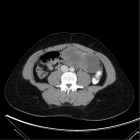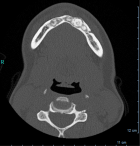Table of Contents
Sex after Neurosurgery–Limitations, Recommendations, and the Impact on Patient’s Well-being
Published on: 13th June, 2024
The aspects that affect the well-being of patients after neurosurgery are diverse. While most contemporary research argues that well-being is multidimensional and related to how individuals, communities, and societies feel when they are successful, there is no single agreed-upon definition [1]. Well-being is defined in the Oxford Dictionary as the state of feeling healthy and happy (Cambridge Dictionary). Well-being is a term used synonymously with a wide range of concepts including self-esteem, self-efficacy, self-determination, resilience, quality of life, improved mood, positive mental health, life satisfaction, and value [2].
A Rare Symptomatic Case of Heterozygous Cerebro-Tendinous Xanthomatosis (CTX) Treated with Urso-Deoxycholic Acid (UDCA): With Mini Review
Published on: 27th May, 2024
Cerebrotendinous Xanthamatosis (CTX) is a rare autosomal recessive disorder caused by a mutation in the CYP27A1 gene leading to impaired metabolism of cholesterol and accumulation of cholestenol and the cholesterol in various tissues such as the brain, eyes, lungs and bones and reduced formation of cheno-deoxycholic acid (CDCA). The clinical presentation is diverse, starting in the early neonatal period and progressing till adulthood unless treated early. A common neurological manifestation is a spino-cerebellar ataxia followed by spastic paraparesis. Tendon xanthoma is a classical finding that usually helps in clinching the diagnosis but may not be present in all cases. Brain MRI also reveals characteristic abnormalities with cerebellar atrophy and hyper-intensities in the dentate nucleus and surrounding cerebellar white matter on T1weighted images. It is a rare cause of treatable ataxia in young individuals. Treatment is by replacement by CDCA or Urso-deoxycholic acid (UDCA). Supplemented with statins these individuals also have premature atherosclerosis causing death due to athero-sclerotic coronary artery disease. Here a rare case of symptomatic heterologous CYP27A1 mutation is reported with syndrome of spino-cerebellar ataxia treated with UDCA.
The Potential Use of Dimethyltryptamine against Ischemia-reperfusion Injury of the Brain
Published on: 19th April, 2024
Ischemia-Reperfusion Injury (IRI) is the outcome of two intertwined pathological processes resulting from the shortage of blood flow to tissues and the subsequent restoration of circulation to a previously ischemic area. IRI (sometimes just one side of the dyad) remains one of the most challenging problems in several branches of emergency medicine. Mitochondrial and endoplasmic reticulum dysfunction is a crucial pathological factor involved in the development of IRI. The sigma-1 receptor (Sig1-R) is an intracellular chaperone molecule located between the mitochondria and endoplasmic reticulum with an apparent physiological role in regulating signaling between these cell organelles and serves as a safety mechanism against cellular stress. Therefore, amelioration of IRI is reasonably expected by the activation of the Sig1-R chaperone. Indeed, under cellular stress, Sig1-R agonists improve mitochondrial respiration and optimize endoplasmic reticulum function by sustaining high-energy phosphate synthesis. The discovery that N, N-dimethyltryptamine (DMT) is an endogenous agonist of the Sig1-R may shed light on yet undiscovered physiological mechanisms and therapeutic potentials of this controversial hallucinogenic compound. In this article, the authors briefly overview the function of Sig1-R in cellular bioenergetics with a focus on the processes involved in IRI and summarize the results of their in vitro and in vivo DMT studies aiming at mitigating IRI. The authors conclude that the effect of DMT may involve a universal role in cellular protective mechanisms suggesting therapeutic potentials against different components and types of IRIs emerging in local and generalized brain ischemia after stroke or cardiac arrest.
Primary Diffuse Leptomeningeal Melanocytosis: A Rare and Challenging Diagnosis
Published on: 17th April, 2024
Primary melanocytic neoplasms of the central nervous system are rare entities and can present in different clinical forms with mild and non-specific symptoms (such as headache and tinnitus) to severe and limiting symptoms (focal deficits and intracranial hypertension), mimicking the most diverse pathologies. In addition to the peculiar changes in imaging tests, diagnosis is always a challenge given the multitude of possible differential diagnoses, including aseptic meningitis. Given this, we bring here the case of a 59-year-old patient who attended care due to headache and vertigo followed by involvement of the cranial nerves and spinal cord, corroborated by physical examination and imaging study suggesting diffuse involvement of the meninges, which was subsequently confirmed by anatomopathological examination as a primary melanocytic neoplasm of the central nervous system but ended up dying due to complications resulting from late diagnosis. The objective of this work is to raise awareness about the possibility of this pathology as a differential diagnosis in these cases where there are often frustrating clinical manifestations but with changes in imaging tests, to enable an early diagnosis and consequently the possibility of a better therapeutic result, in addition to a brief review of the propaedeutic findings of this pathology.
Navigating Neurodegenerative Disorders: A Comprehensive Review of Current and Emerging Therapies for Neurodegenerative Disorders
Published on: 4th April, 2024
Neurodegenerative disorders (NDDs) pose a significant global health challenge, impacting millions with a gradual decline in neurons and cognitive abilities. Presently, available NDD therapies focus on symptom management rather than altering the disease trajectory. This underscores the critical necessity for groundbreaking treatments capable of addressing the root causes of neurodegeneration, offering both neuroprotection and neuro-restoration. This in-depth review delves into the forefront of emerging NDD therapies, encompassing gene therapy, stem cell therapy, immunotherapy, and neurotrophic factors. It sheds light on their potential advantages, hurdles, and recent advancements gleaned from both preclinical and clinical studies. Additionally, the document outlines existing NDD treatments, spanning pharmacological and non-pharmacological interventions, along with their inherent limitations. The overarching conclusion emphasizes the immense potential of emerging therapies in NDD treatment, yet underscores the imperative for continued research and optimization to ensure their safety, efficacy, and specificity.
Laws of Pathophysiology of Migraine in the Third Millennium
Published on: 20th March, 2024
Science is the art of systematic and reproducible measurements, ultimately leading to knowledge supported by a holistic logic. Besides serendipity, there are 6 ways in general to obtain knowledge: authoritarianism; mysticism; rationalism, empiricism; pragmatism; and scepticism. Over the last 100 years, a canonical mythology – cortical spreading depression (CSD) – has prevailed in migraine pathophysiology. Conversely, a well-defined adaptive/protective role has evolved for CSD in locusts, Drosophila, and mammals. Additionally, an elaborate but entirely symptomatic nosologic system has arbitrarily evolved in migraine / primary headache. While the so-called systematic but symptomatic classification system of migraine / primary headache keeps on advancing the data-bank exponentially, the cause-effect nexus continues to obscure the most important systematic and insightful components of the knowledge of primary headache. The first step in advancing the cause-effect mystery of migraine / primary headache is to create a conceptual, consistent, and important adaptive-pathogenetic divide in the massive and disparate data-linked pathophysiology of the disorder. Once certain definitive principles (not laboratory/neuroimaging / genetic/epidemiologic data) emerge in the science of migraine / primary headache, we become empowered to understand the complex but key phenotypic blueprint as well as the neuro-pathophysiology / neuropsychiatry of the entity, including the visual (nasal visual-field sparing digitally-displaceable and eyeball-movement-synchronous scintillating scotomata), the lateralizing fronto-temporal-nuchal headache exclusively involving the ophthalmic division of the trigeminal nerve, and the associated features such as ‘stress’, ‘post-stress’, ‘autonomic storm’, ‘protean’ and ‘spontaneous’ onset and offset, and headache-aborting nausea-vomiting. In this manner, we have also evolved principles to begin to understand the most complex female predominance of migraine patients in adults [F:M=3:1] as well as the decline of prevalence in migraine attacks following menopause and advancing age. The Laws of the Pathophysiology of Migraine encompass the invaluable neurological / neuro-ophthalmological shift in pathophysiology from the brain to the eye.
Chemotherapy-induced Peripheral Neuropathy: A Mini-review of Current & Developmental Treatments
Published on: 22nd February, 2024
Chemotherapy-Induced Peripheral Neuropathy (CIPN) is a major limiting side effect of many common chemotherapeutics often leading patients to terminate their chemotherapy treatment regimen early. The development of CIPN differs by chemotherapeutic class, with platinum- and taxane-based treatments demonstrating the highest incidence rates. Despite its relatively high prevalence, there are currently no FDA-approved treatments for CIPN, and clinicians must rely on the off-label use of several analgesics and various non-pharmacological approaches to treat CIPN symptoms in patients. Novel insights on the development of CIPN have identified new drug targets leading to several Phase II clinical trials to be initiated. Here, we describe recent advances in drug development for CIPN.
A Water-soluble Form of Dihydroquercetin Reduces LPS-induced Astrogliosis, Vascular Remodeling, and mRNA VEGF-A Levels in the Substantia Nigra of Aged Rats
Published on: 16th February, 2024
Background: The age-dependent sporadic form of PD is characterized by the degeneration of dopaminergic (DA) neurons in the Substantia Nigra (SN), gliosis, and vascular changes. Vascular changes may contribute to the onset of the disease and exacerbate the neurodegenerative process, as some vascular changes occur before the onset of neuronal loss. To demonstrate the anti-neuroinflammatory efficacy of a new compound, a water-soluble form of dihydroquercetin (DHQ-WF), we studied the structural changes of microcirculatory vasculature, astroglial GFAP, and vascular endothelial growth factor –A (VEGF-A) mRNA expression in the SN of young and old rats after unilateral nigral treatment by lipopolysaccharide (LPS) and oral administration of DHQ-WF.Materials and methods: The experiments were performed on 18 young (8 weeks - 10 weeks old; 250 g - 320 g) and 18 old (18 months - 19 months old; 390 g - 450 g) male Vistar rats. Young and adult rats from the experimental groups were stereotactically injected with 2 μL LPS solution (LPS from Escherichia coli; 0,01 μL/mL) into one side of the SN. Control young and old rats were similarly injected with 2 μL sterile saline. Half of the animals in both the control and experimental groups (6 animals in each group) received a 2 ml solution containing DHQ-WF at a concentration of 3 mg/ml orally every day. After 8 weeks, brains were harvested and serial cryostat sections were prepared for histochemical (FITC-labeled tomato lectin), immunohistochemical (anti-GFAP Antibody, Cy3 Conjugate) staining, and real-time PCR (mRNA VEGF-A).Results: Eight weeks after LPS injection into the SN, a significant excess of areas occupied by cell bodies and processes of astroglial cells, the density of microcirculatory vessels, and mRNA VEGF-A expression was observed in old animals compared to control old animals and young LPS-treated rats. Oral administration of DHQ-WF to LPS-treated rats resulted in a significant reduction of these parameters in old animals.Conclusion: Injection of LPS into rat SN induces neuroinflammation and vascular angiogenesis, maximally expressed in old animals. Administration of DHQ-WF for 8 weeks significantly reduces these LPS-induced changes. DHQ-WF may be an effective treatment for reducing the effects of neuroinflammation in the aging brain.
Biomarkers for High Metabolic Burden in Neurologic Disease
Published on: 15th February, 2024
Neurologic diseases are recognized to have multifactorial origins well beyond mere genetic predisposition. Nutritional burdens have been identified to contribute to neurodegeneration. Healthy diets are becoming increasingly appreciated to potentially play key roles in both the developing and developed world of reducing incidences of neurologic diseases, while unhealthy diets are acknowledged to be contributing to their rise.
A Strength-based Approach to Achieving Academic Success for Individuals with Autism Spectrum Disorder (ASD)
Published on: 14th February, 2024
Qualitative research enabled us to explore the personal perceptions and institutional factors that facilitated academic success, as well as challenges, of a sample of 40 academically talented students with autism spectrum disorder (2e/ASD) who were enrolled in highly competitive colleges and universities in the United States. We explored their high school academic and social experiences, their college transition, parental views of their talents and disabilities, as well as college service providers’ opinions about their academic progress and needs. We identified some specific strength-based teaching and instructional strategies and academic experiences that students reported as contributing to their academic success during high school including challenging and advanced classes, use of strengths-based learning strategies (like independent study, and positive relationships with teachers and counselors. We also found that the level of disability support offered by the college was an important consideration for the academic success of this population, as was an understanding of the laws and regulations that apply and don’t apply when students with disabilities attend college.
Autoimmune Diseases Associated with Iron Deficiency Anemia; Coexistence of Demyelinating Disease and Inflammatory Bowel Disease
Published on: 24th January, 2024
In a young patient with iron deficiency anemia and low hemoglobin levels, we identified a very rare association: Demyelinating disease with Inflammatory Bowel Disease (IBD).
Comparative Study of Cerebral Volumetric Variations in Patients with Schizophrenia with their Unaffected First-degree Relatives, using Magnetic Resonance Imaging Technique, a Case-control Study
Published on: 3rd January, 2024
Background and purpose: Schizophrenia (SZH) is a chronic mental disorder affecting the individuals` thoughts, perceptions, emotions, and behaviors. People with SZH may experience a wide range of positive, negative, and cognitive symptoms. Since there are no laboratory assays for definite SZH diagnosis, the authors aimed to identify the cerebral volumetric variations in SZH patients with the most prevalent positive symptoms as a diagnostic tool. This study selected 15 SZH patients displaying the most prevalent positive symptoms based on the Diagnostic and Statistical Manual of Mental Disorders (DSM-5) criteria. Assessment tools included the Mini-Mental State Examination (MMSE) for cognitive impairment, the Positive and Negative Syndrome Scale (PANSS) for symptom evaluation, and the Wechsler Intelligence Scale (WIS) for intelligence assessment. Additionally, 15 Healthy Controls (HC) without cerebral pathologies were recruited. T1w MRI images underwent analysis using Freesurfer software. Data analysis employed Mann-Whitney U and χ² tests, considering p < 0.05 as significant.Results: SZH and HC groups showed no significant differences in age and gender. However, significant (p < 0.05) alterations in Gray Matter (GM) volume were observed in SZH patients compared to HC. In the right hemisphere, several regions exhibited volume reduction, including the Fusiform sulcus, Rostral middle frontal gyrus, isthmus cingulate, Frontal pole, Middle temporal gyrus, Lateral occipital gyrus, and Inferior Parietal gyrus. Notably, the Precentral sulcus and Postcentral gyrus demonstrated volume acceleration. Similarly, in the left hemisphere, various regions showed volume reduction while the Paracentral gyrus indicated volume acceleration, all significant (p < 0.05).Conclusion: SZH patients display significant volumetric brain changes, indicating potential for future diagnostic procedures in SZH.

HSPI: We're glad you're here. Please click "create a new Query" if you are a new visitor to our website and need further information from us.
If you are already a member of our network and need to keep track of any developments regarding a question you have already submitted, click "take me to my Query."
























































































































































